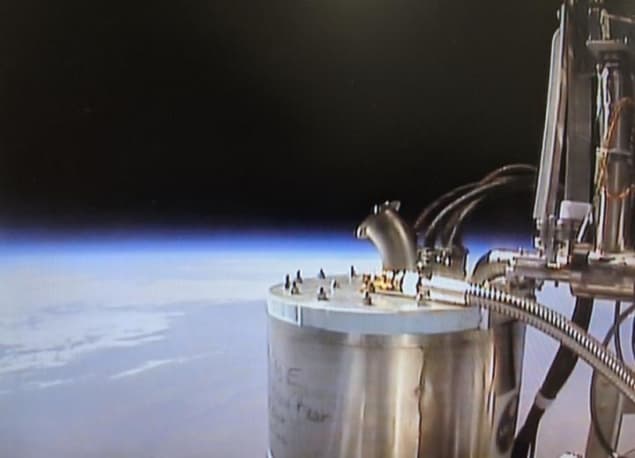
Balloon-borne telescopes can observe a wealth of astrophysical phenomena that ground-based instruments cannot, but onerous cooling requirements limit how much equipment can be taken aloft. Researchers at NASA’s Goddard Space Flight Center found a way to minimize this problem by drastically reducing the weight of a telescope’s cooling system. The researchers have tested their approach on a mission called the Balloon-Borne Cryogenic Testbed (BOBCAT) and have a follow-up mission planned to study it further.
Distant galaxies and star- and planet-forming clouds of gas and dust emit photons in the infrared region of the spectrum. Because the Earth’s atmosphere blocks most of this infrared radiation, these objects are hard to study from the ground. While space missions are the ideal option, they are extremely expensive. Balloons that carry telescopes way up into the stratosphere are a good alternative because they cost much less.
Near absolute zero temperatures required
The mirrors of balloon-borne telescopes can be huge, measuring up to 3 to 5 m across – “the size of a living room”, says team leader Alan Kogut. This presents a challenge because the mirrors, like the rest of the telescope, need to be cooled to near absolute zero during the mission. If they aren’t, their heat can wipe out the infrared light from deep space “like overexposing a camera”, Kogut says.
“Liquid helium can easily cool the telescope, but keeping it cold means putting the entire telescope into a giant thermos bottle called a dewar,” he says. “A thermos bottle the size of a living room would weigh several tonnes – more than even the largest balloons can carry.”
Standard dewars need to be this heavy because their walls must sustain a vacuum against sea-level air pressures, Kogut explains. However, he and his colleagues reasoned that a balloon-borne dewar could be much lighter since the pressure at the balloon’s operating altitude of 40 km is only 0.3% of that at sea level.
Extremely thin stainless-steel walls
The dewars developed for the BOBCAT mission comprise an inner cup, which contains the liquid coolant, surrounded by an outer shell. The gap between the two layers is under vacuum, preventing air from carrying heat from the outside into the cold interior. This “bucket” design is conventional, but the walls of the cup and shell are not, being made of stainless steel which, at 0.5 mm thick, is “not much thicker than a soda can’s”, says Kogut.
The new dewar can be launched at room temperature, and it has an integrated valve that allows the vacuum gap between the inner cup and outer wall to vent continuously during ascent. This permits air to escape, thereby eliminating any pressure gradient across the walls.

Students take cosmic-ray balloon challenge
Once the balloon reaches an altitude of around 40 km, the valves closes to seal the dewar’s vacuum, explains Kogut. The telescope is cooled by pumping liquid nitrogen or liquid helium into the ultralight dewar from separate storage tanks, which themselves are of standard construction, are small and don’t weigh much.
Successful first test
The team tested the new design on an 827-kg-payload flight launched in August 2019. The goal of this initial test was two-fold. First, it was meant to prove that cryogenic liquids (14 litres of liquid nitrogen and 268 litres of liquid helium in the test) could indeed by transferred at float altitudes. Second, it was designed to measure the total amount of heat leaking to the receiving dewar. The researchers calculated this to be around 2.7 W, which is larger than the 1 to 2 W measured for the same dewar in ideal laboratory conditions. This value will be compared in a follow-up flight using a lighter dewar of identical size, they say.
The results from the first flight are detailed in the Review of Scientific Instruments.



